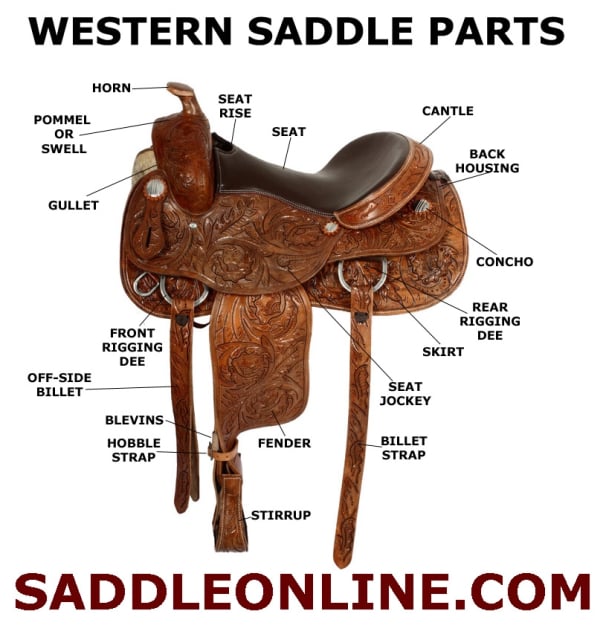The Parts of a Western Saddle

Western saddles have a number of different parts that make the saddle both functional and effective. It is important for riders to know the parts of the saddle in order to determine the correct saddle size they need and learn how to tell the different types of western saddles apart.
Horn: Western saddles are most easily identified by their horns. The horn is positioned on top of the pommel on the front of the saddle. The traditional purpose of the horn is to provide extra support for the rider as well as for use as place for lassos and other equipment.
Pommel: Also known as the swell, the pommel is the location where the bars of the saddle's tree come together at the front of the saddle. It serves as a base for the saddle horn on a Western saddle.
Cantle: Structurally, the cantle provides an anchor position for the tree in the rear of the saddle. It also forms the back of the seat.
Seat: The seat of a Western saddle is the part that the rider sits on while mounted. It is located directly over the saddle tree.
Jockey: Most western saddles have two jockeys, one in the front and one towards the rear. They are pieces of leather that separate the rigging and the seat of the saddle. The jockey's basic function is to keep the rider's body from coming into contact with the saddle's rigging while riding.
Rigging: The rigging on your Western saddle includes the cinch, dee rings, billets and cinch straps. These pieces are used to hold the saddle on the horse along with the girth.
Skirt: The skirt of the saddle goes around its base to create a flat base that allows the saddle to sit comfortably and evenly on a horse's back.
Saddle Tree: The saddle tree is composed by the bars of the saddle and the gullet. It is the frame that the saddle's structure is based on. The size of the saddle's tree determines how it fits the horse.
Gullet: The gullet of the saddle keeps the saddle from sitting directly on top of the spine.
Fender: The fenders are leather panels that connect the stirrup to the main part of the saddle.
Stirrup: The stirrup is a triangular structure where the rider's foot rests while riding. The stirrups help provide support for the rider's leg and help the rider hold proper riding position
Comments : 0